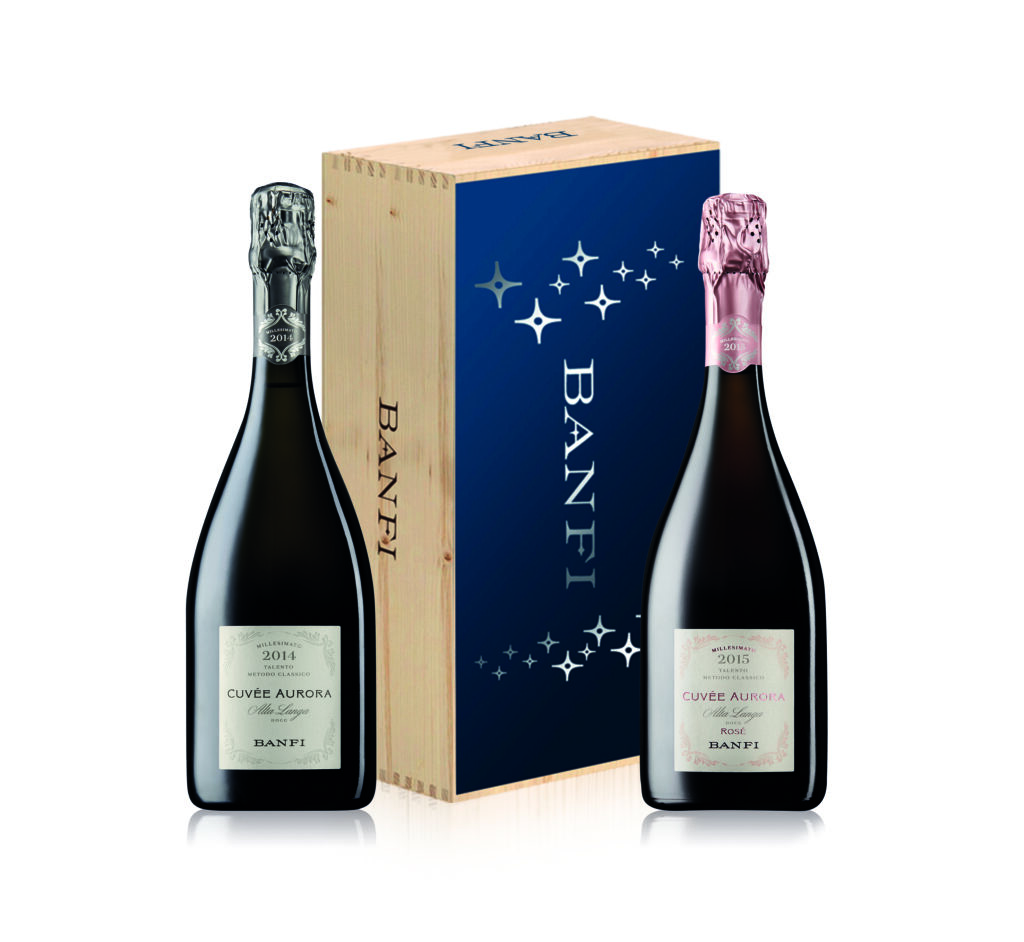The Disgorgement Process allows the removal of sediment. Find out how it is performed and at what stage of wine production.
What is wine disgorgement and how it is performed
Disgorgement of wine is a fundamental step in the production of classic method sparkling wines and, in the case of Banfi, our bubbles are produced according to this procedure in the cellar Banfi Piemonte located in Streviin the province of Alessandria.
In addition to our visitable wine cellar nestled amidst the Montalcino vineyards at the enchanting and picturesque estate of Castello Banfi Wine ResortIn fact, Banfi also has another equally historic winery with an adjoining 50 hectares (46 of which are vineyards) in Piedmont. Here we produce quality bubbles such as sparkling wines classical method and the Charmat.
At what stage of production is the disgorging of sparkling wine carried out?
Disgorgement of wine is a process that involves theelimination of fermentation residues from bottles of classic method sparkling wine.
The classic method sparkling winesin fact, undergo a second fermentation in the bottle: the base wine cuvée, made with fine wines from the region (Piedmont in the case of Banfi Piemonte), is enriched with a liqueur de tirage, a mixture of sugars, minerals and yeasts capable of triggering the re-fermentation of the wine and the so-called "presa di spuma". This process, however, results in the formation of residues and spent yeasts, which compromise the crystal-clear clarity that characterises Italian sparkling wines.
Process
For this, the bottles are turned upside down and, through the complex process of remuage, whether manual or mechanical, the residues are trapped towards the neck of the bottle, inside the bidule located under the crown cap.
It is at this stage that the wine is disgorged, i.e. the crown cork with the residue is removed and the new characteristic cork that characterises classic method sparkling wines is inserted.
Disgorgement of wine: meaning and origin of the name
The word "disgorging"by which the whole process of removing the residue is referred to, refers to the actual act of uncorking the bottle. The French word 'dégorgement', on the other hand, which is also used in Italy to indicate this procedure (given the profound influence of French wine culture in the production of classic method sparkling wines) can be translated literally as 'discharge' and refers instead to the elimination of residues. The two terms are used indiscriminately such as synonyms.
Dégorgement: differences between manual and mechanical procedure
Within the articulated and complex production process, the disgorging of sparkling wine occupies a role important, since guarantees the presentation of a crystal-clear sparkling winewith a luminous perlage and bubbles of character. In the past, this operation was performed by hand, even within the Banfi Piemonte winery, by experts in manual remuage and dégorgement à la volée, through skilful and precise gestures, the fruit of years of experience in this field.
Dégorgement à la volée: the traditional procedure
Dégorgement à la voléei.e. the disgorging by handconsists in uncorking the upside-down bottle by handby exploiting the pressure created inside it during refermentation and thus eliminating the residue inside the cork and bidule. It is then quickly straightened so as to reduce the spillage of the sparkling wine.
At this stage, you can compensate for the loss of liquid through a procedure of topping up with liquer d'expedition or liquer de dosage, a sugary blend that enhances classic method sparkling wines and helps enrich the sensory experience.
Innovation
The difficulty of dégorgement à la volée made it essential to invent a mechanised procedure that would minimise or completely eliminate wine spillage. However, for fine formats or the most special cuvées, we still use this manual technique, which we could define a true art, the exclusive prerogative of expert master vintners, such as those at Banfi.
Dégorgement a la glace: the modern procedure
The mechanised procedure of disgorging wine or sparkling wine is called dégorgement a la glace. Bottles undergoing remuage are pre-washed from the pupitres (the special wooden boards on which they are placed with the neck downwards) and placed in special machines that freeze the neck of the bottle and the crown cork thanks to a special saline compound capable of bringing the liquid and sediment to a temperature between -25°C and -30°C.
Machinery
The machinery then proceeds to turn the bottles upside down: unlike manual dégorgement, with dégorgement a la glace the spent yeast and other residues trapped in the bidule will be frozen, without the risk of them falling into the bottle and clouding the wine again.
It is then possible to safely remove the frozen cork (the actual disgorging of the classic method sparkling wine), top up the wine if necessary, and replace the cork with the metal cage.
Conclusions
On dégorgement a la glace is, as mentioned above, the procedure for disgorging wine most used by the producers. However, watching a master vintner perform manual dégorgement is a real spectacle, an experience not to be missed if you love wine and its production according to ancient traditions.


